I have some wonderful memories of birding at Periyar with my Masters batchmates. While birding, we saw many forest species that I had not previously seen before – many lifers for me. We sighted an elephant with two calves as well, which is rare. I remember listening to the call of Malabar Whistling-hrush for the first time at around 5 p.m., just as dusk was creeping in. I froze and looked at my batchmates – I assumed it was a person! I also remember being introduced to the call of Indian Scimitar-Babbler and spotting Black Baza and Sri Lanka Frogmouth with my batchmates!
I am guilty of not being regular on eBird as well. But in the past few weeks, I have taken efforts to be more regular, because I felt that not doing so would mean losing touch with the very thing that got me into the wildlife field. My friends in Singapore study geology and natural hazard risk, and one of them didn’t even like birds! But over the past 4 years, they have taken a real liking to birds – one of them even joined eBird on her walk to the garden with me. I feel really happy when I think of these little things. I am wrapping my PhD at the Asian School of the Environment and Earth Observatory of Singapore at Nanyang Technological University and I generally enjoy birding in Southeast Asia too. The Jurong Bird Park here is a nice place if you want to learn about birds across the world.
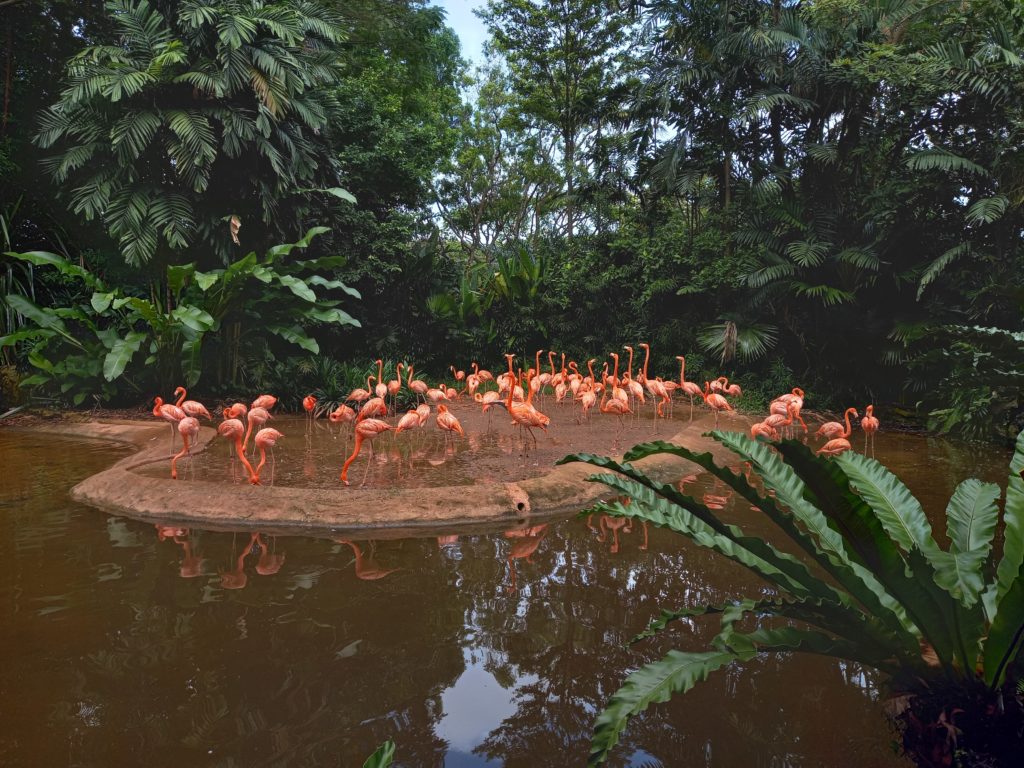 Caribbean flamingos seen at Jurong Bird Park in Singapore. Photo by Anushka Rege
Caribbean flamingos seen at Jurong Bird Park in Singapore. Photo by Anushka Rege
This is how my love for birds and research took shape..
I started my foray into wildlife biology and conservation through birding. I grew up in Pune, which has many hills called tekdis. I would go there with my college friends, and we used to have a great time birding and just chatting in between. School vacations also meant travelling with my grandparents to places like Ponda in Goa, Sawantwadi in Maharashtra, and Belgaum in Karnataka. Their stories would always make me want to go back in time to see how the forests and village life were back then. Gerald Durell’s writing also influenced me a lot as a schoolgirl.
I always loved being outdoors, but I started birding seriously only during my Bachelors. I was fortunate to find a group of friends who were into nature, and together we would go around Pune on birding trips. I have some wonderful memories of birding with my Masters batchmates as well.
I was studying Microbiology at Fergusson College for my Bachelors. I quite enjoyed it, but I enjoyed being outdoors even more! I did small projects on birds and butterflies at the Fergusson College campus in Pune. I thought, what fun it would be to do this for a living! That is when I started considering a career in this field. I started reading more about the work of scientists from National Centre for Biological Sciences, Wildlife Institute of India, and Nature Conservation Foundation, and I was fascinated; I wanted to be like them!
So many people have helped me through this journey. Jahnavi Joshi and Devica Ranade were kind and gave me so many pointers when I was an undergraduate student. Vidya Athreya agreed to take me along during her field trips to rural Maharashtra and I learned so much just by observing how she interacted with the local people. My seniors from the Masters course have been so supportive! I have to mention Nandini Velho, Umesh Srinivasan, Nisarg Prakash and Mayuresh Gangal who have constantly supported me. Ajith Kumar, Girish Punjabi and Devcharan Jathanna were super patient with me and taught me so much. There are so many more names, I thank them all for their support and encouragement.
I did my Masters from 2014 to 2016 in Wildlife Biology and Conservation, conducted at the National Centre for Biological Sciences (NCBS) in Bangalore. When I got into my Masters programme, it took me a while to adjust to the ways of academia. I also had trouble accepting that I belonged – back then I did not know something like imposter syndrome exists. But my batchmates were very supportive and I have learned a lot from each one of them. I have come to appreciate the fact that the research community in India is so keen to discuss new ideas and give constructive feedback. Everyone pitches in and gives great ideas and suggestions. As time passed, I learnt to not let this feeling of being out of place get to me. It still happens sometimes, but at least now I am aware of it and what I can do to address it. If any of you feel this way, please know that you are not alone and that it is okay to feel this way at times.
Currently, I study the socio-environmental impacts of cashew expansion in the northern Western Ghats. Cashew is grown across 33 tropical countries, yet its impacts on biodiversity and livelihoods are not as well-studied as oil palm or coffee. The Sawantwadi-Dodamarg region is interesting because it has monoculture cashew plantations and privately owned forests. These privately owned forests are mostly owned by farmers who are legally entitled to do as they please with their lands; lately they have been converting their forests to cashew. Cashew crop always fetches good money with minimal inputs and investment. Conservation can only be effective if the local communities wish for it to be, and hence it is important to understand what they want and how they want to live and use their lands. We cannot force conservation on them.
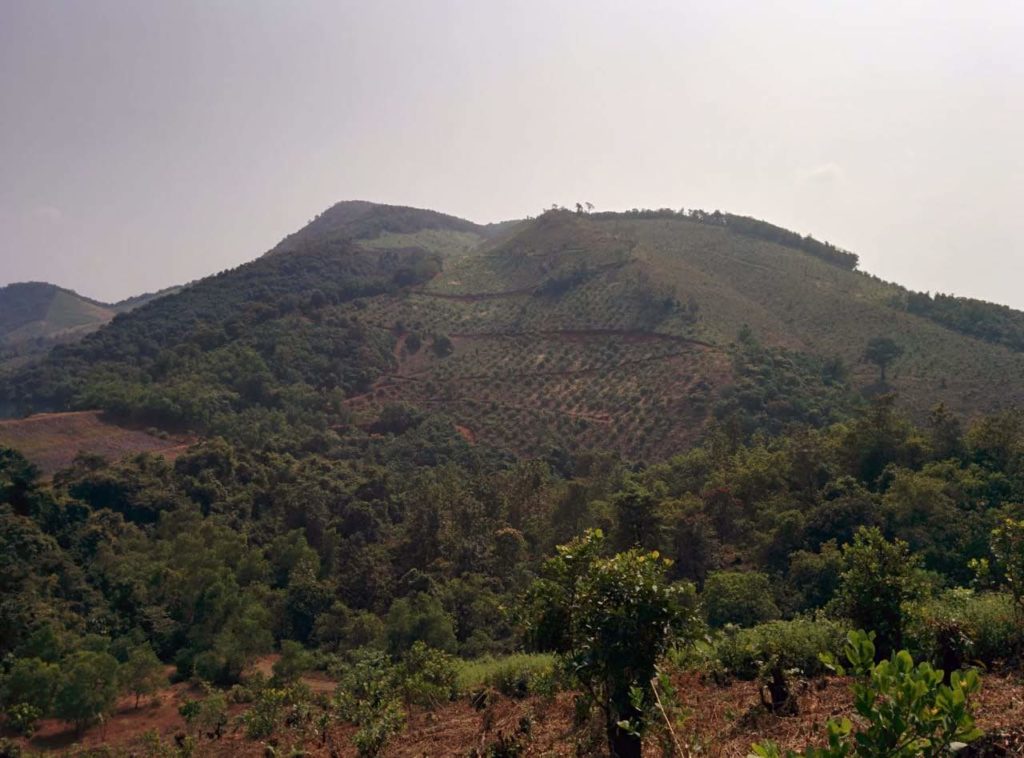 A cashew monoculture plantation on the hill slopes next to forests. Photo by Anushka Rege
A cashew monoculture plantation on the hill slopes next to forests. Photo by Anushka Rege
I began studying this topic in my Masters, by asking if mammals used cashew plantations. Using camera taps, we found 9 terrestrial mammals in cashew, a subset of the 11 species found in forests. During my Ph.D., we started off with a literature review to understand what is known already of biodiversity and livelihoods in cashew. We did some spatial modelling to understand which regions are vulnerable to cashew cultivation as they host threatened vertebrates and high aboveground carbon. We followed it up with social surveys to understand the land management practices of cashew farmers. We also did some remote sensing to detect and map cashew plantations.
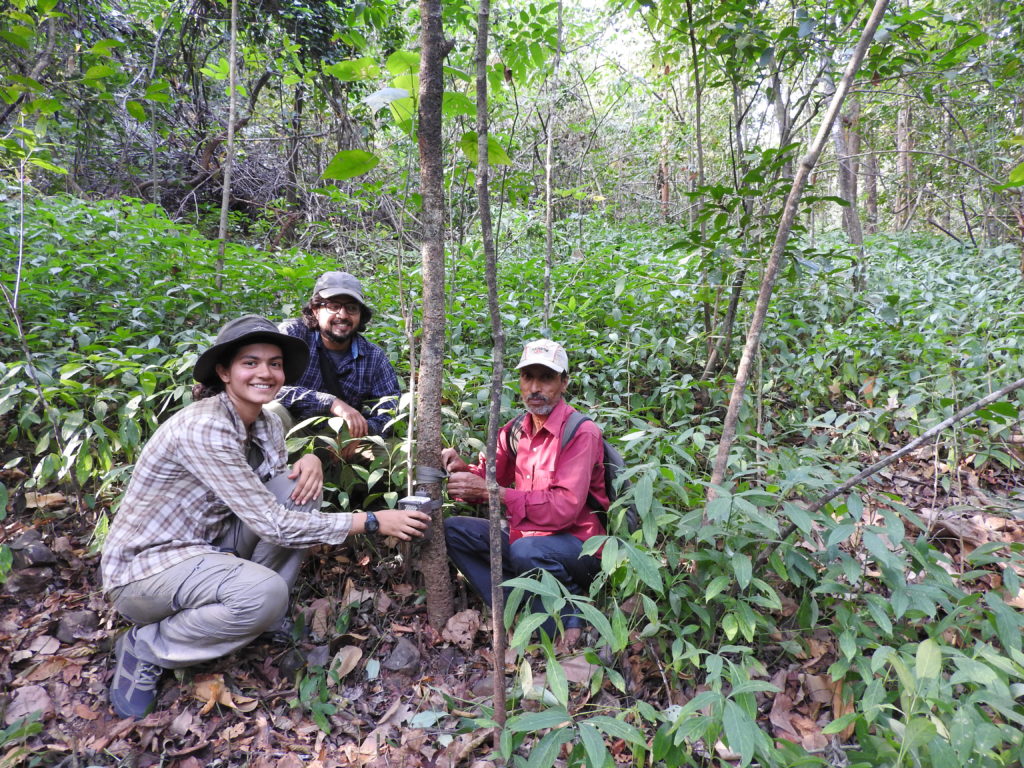 Setting up camera traps during fieldwork with Girish and Narayan Desai. Photo by Ajith Kumar.
Setting up camera traps during fieldwork with Girish and Narayan Desai. Photo by Ajith Kumar.
Finally, I used a combination of point counts and acoustic methods to understand the responses of bird species richness and abundances to various land use types such as cashew plantations, privately owned forests and Reserve Forests. I was interested in understanding if certain land use types have more bird species than others. Can we use new acoustic methods to gain more insights into bird and overall biodiversity monitoring? I was keen to find whether factors such as distance to villages and the amount of forest cover affected the bird communities.
This fieldwork had to be cut short due to the COVID-19 pandemic, so I could not do everything I had planned, such as collecting vegetation data. But even then, I made memories that will last me always. Vishal Sadekar was my field assistant during this time. He has excellent birding skills and is passionate towards wildlife biology. We would drive around all of Dodamarg and Sawantwadi on my moped bike – Activa. He has a pleasant nature and is always up for fieldwork! He works with the Nature Conservation Foundation now. Without him, I could not have collected the data I have. My best memory with him involves driving on the Activa early morning in the biting cold, when he used the bike horn, and a drongo mimicked the horn sound! We laughed so much.
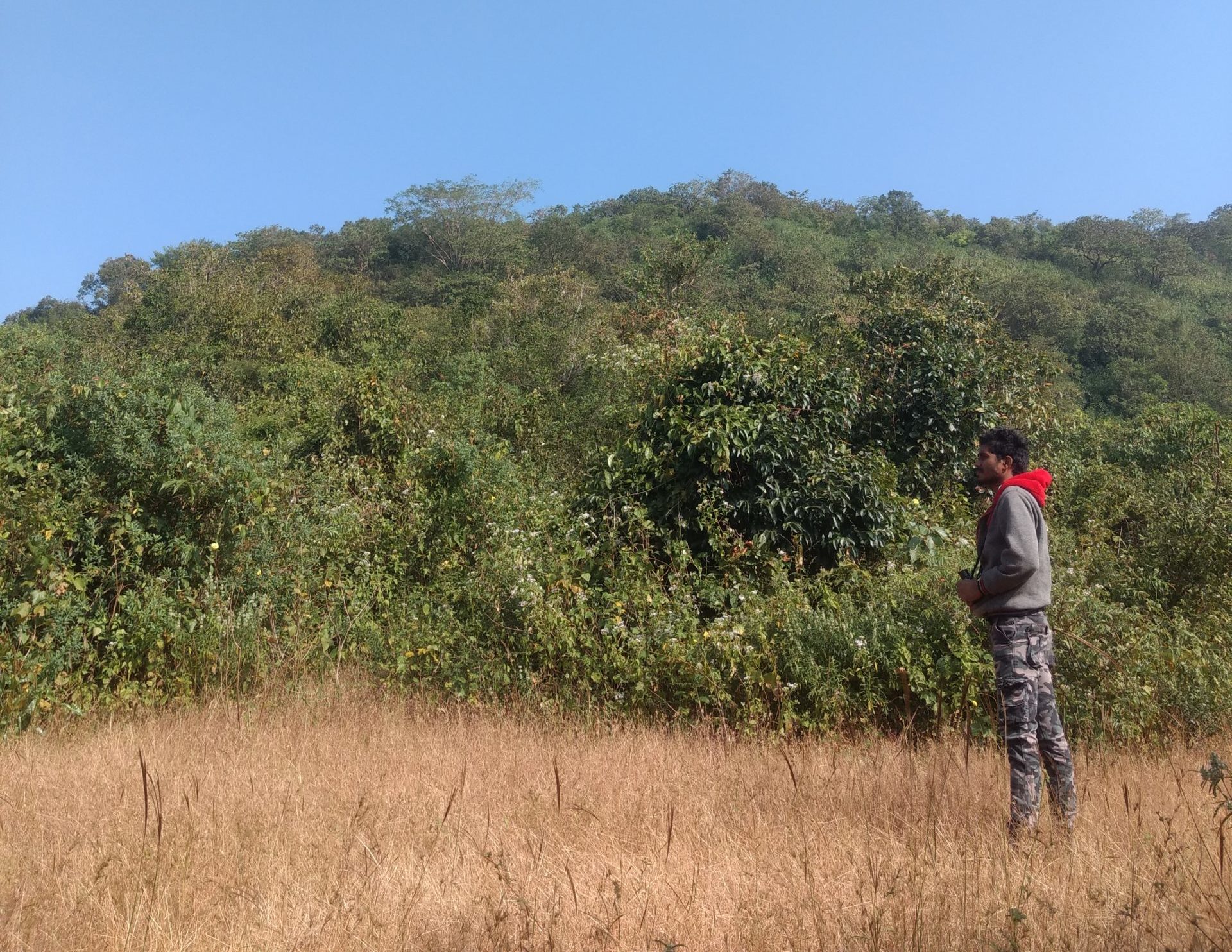 Vishal helping me collect bird data in a privately owned forest. Photo by Anushka Rege.
Vishal helping me collect bird data in a privately owned forest. Photo by Anushka Rege.
Overall, I hope my Ph.D. provides good baseline data so that we may better understand how to reconcile cashew farming and livelihoods with biodiversity conservation. India is 2nd in the world in terms of land area under cashew cultivation at 1,115,434 ha. Cashew crop has been an integral part of our shared cultures in India, and hopefully we can preserve the farming and our links to culture as well as our biodiversity.
I love what I do because..
I really enjoy doing field work. Walking through the forests makes me the happiest. I love seeing animals and plants, be it common or rare species. I also enjoy meeting people and talking to them. Including a social component in my research has allowed me to interact with various stakeholders such as the local farmers and the Forest Department. I feel privileged that I am able to study birds and wildlife, and I try my best every day to recognise and acknowledge the privilege – I have decided to continue working in the Konkan landscape and make good use of this privilege.
While working in Konkan, countless Kakas and Kakis (uncles and aunties in Marathi and Malvani) have fed me and cared for me. If I travelled alone at night, the state transport bus drivers and conductors would often ensure I made it home. Their kindness has reinforced my belief in the good in this world. I saw one of my field assistants, Narayan Desai, change a lot in these past 6 years. He has taken an active interest in fieldwork, and he is supportive of women doing fieldwork. He is in his 50s and knows so many folk tales from the mountains of Tillari. Listening to those stories in this house while munching on papayas and watching Great Hornbills sit on the coconut trees in his front yard is a memory I will always cherish.
I also remember that summer of 2016, where in a month I was lucky to hear elephants and see Malabar Trogon for the first time! I ended up sighting Malabar Trogons again a couple of times, and soon after, we saw some dhole adults and pups who were feasting on a sambar deer by the river. I was torn, where do I look? Up at the canopy, or down towards the dholes! I did a bit of both. This year, Akanksha who is from Tillari has told me that she too wants to roam around the forests near her house with me. I think I have spent more time there than in Pune in the past 6 years, and I’m waiting to go back again so all these plans can be accomplished!
Challenges I faced..
As I have grown older and travelled across various locations for my career, I do miss my mom and my cat Gabbar. My grandmother is in her 80s now, and I really miss drinking tea with her.
I think I am far more confident and outspoken now, but I was not this way always. During my time as a Masters student and even after, I have faced sexism and harassment in the field or at my workplace and felt like I had no power to speak up as a student, or that when I did it did not help much. Navigating through fieldwork can be tricky but you learn how to deal with difficulties over time and with experience. There have been instances at my past workplace when I shared my experience of sexual harassment and trauma with certain senior scientists in power and they did nothing. I still see their names often on Twitter or as guests at conferences or events, and I feel demotivated because I remember the bad experiences all over again. But I remind myself that I was not wrong, it was them who had the power to change things but did not do so.
I talk about this because although I do think our research community is great, I also think that there is ample scope for improvement. It is a small community to be honest, and we could all unite to create kinder and safer spaces for all; but I feel we have not done this entirely yet. So along with all the good stories, I share the challenges I have faced very openly in the hope that such instances are not repeated. I hope that we learn to do better for ourselves and for each other.
Sometimes, when I feel a bit depressed at the overall state of the world, I look up to my forever inspirations – Aparajita Dutta, Vidya Athreya, Divya Mudappa, Nandini Velho, and my PhD advisor Janice Ser Huay Lee. I instantly feel better about the long journey ahead.
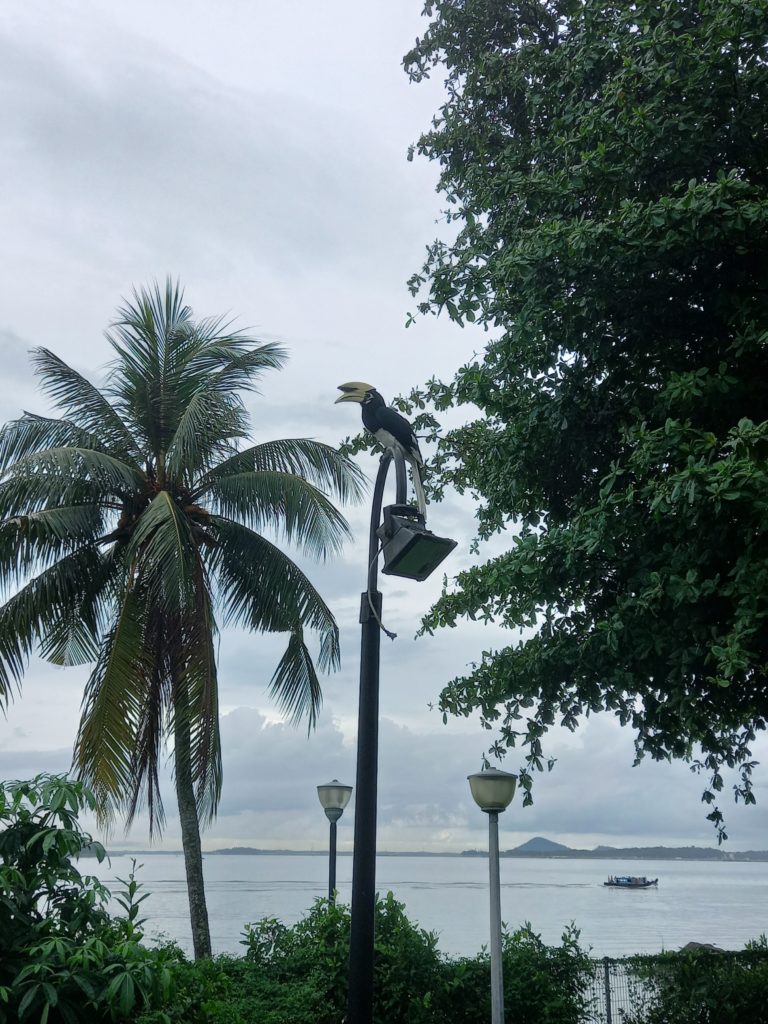 An Oriental Pied hornbill near the coast in Singapore. Photo by Anushka Rege
An Oriental Pied hornbill near the coast in Singapore. Photo by Anushka Rege
My advice to young researchers is..
I am no expert here, but I’ll share some things I learned, and I hope this is useful:
- Try all kinds of experiences at least once. Knowing what you don’t like in particular can help you cross out things and get closer to figuring out what you actually like!
- Do not be afraid to keep asking questions and talking to others, no matter how junior or senior they might be, or no matter how silly the questions or ideas may seem at first. I must admit that I often struggle with this too! But at times when I have done this successfully, it really helped me broaden my thoughts.
- Keep looking for opportunities and scholarships. Do not miss out on a prestigious scholarship just because you think it is too competitive. You owe it to yourself to give it a fair shot.
- Persevere and take breaks too. I used to think that only smart people do PhDs or go into academia. As I stand on the brink of submitting my thesis, I can tell you that my PhD experience has been more about persevering than anything else. If you like what you do, then you will keep doing it and you are going to be happy, so it is a win-win. But of course, also remember to rest and treat yourself with kindness.
Anushka Rege
[email protected]
PhD candidate
Coupled Human and Natural Systems Lab (CHNS-Lab)
Nanyang Technological University, Singapore
Twitter: @AnushkaRege
Instagram: @anushkareggae

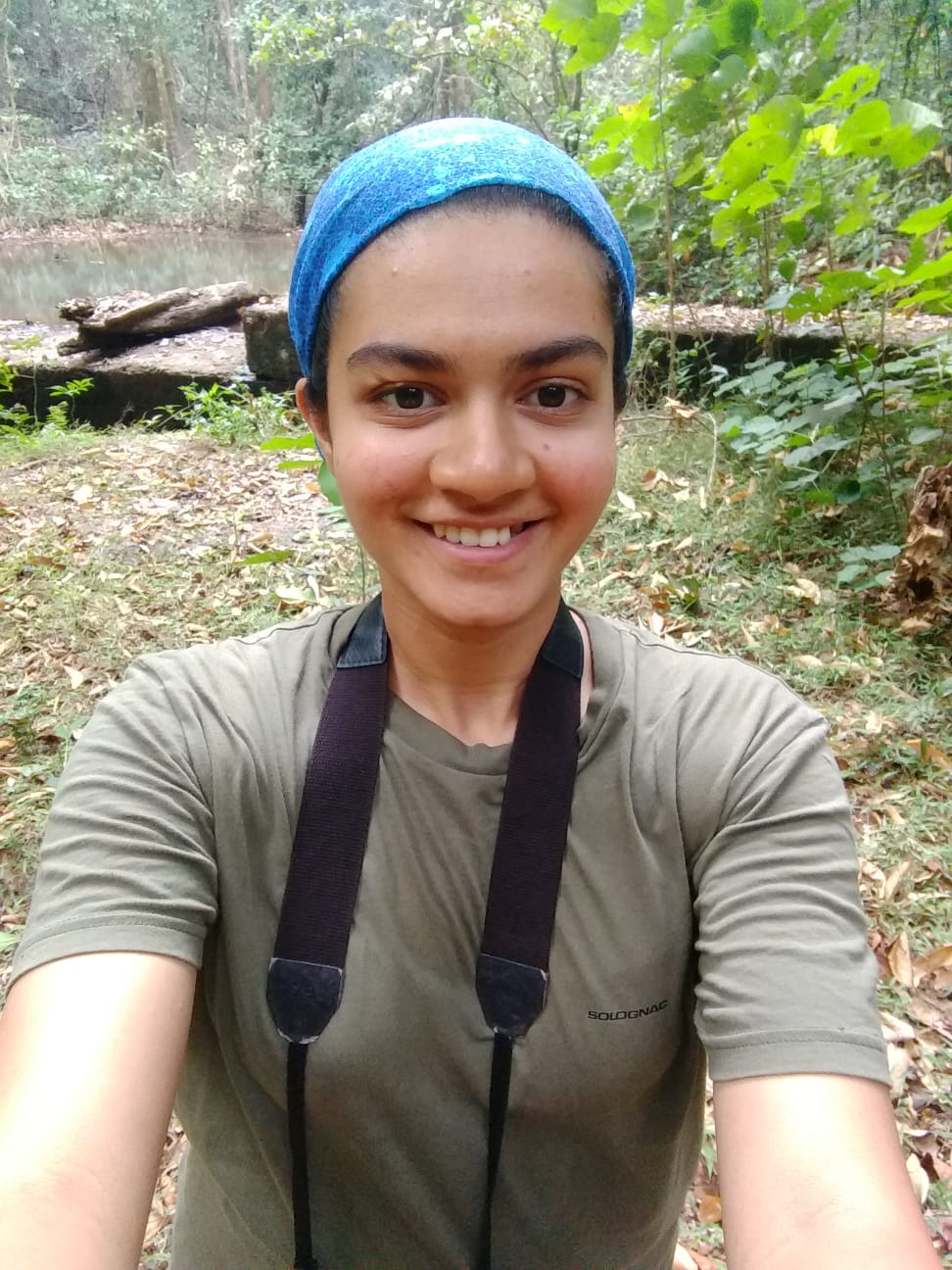
Great journey dear 🎊
Thank you for your valuable experiences. 🙏